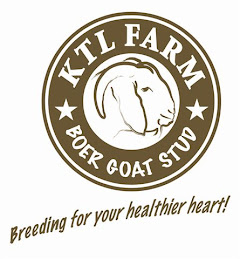|
|
- Goat's milk is less allergic - It does not contain the complex protein that stimulate allergic reactions to cow's milk.)
- Goat's milk does not supress the immune system.
- Goat's milk is easier to digest than cow's milk (An old statistic showed that goat's milk will digest in a baby's stomach in twenty minutes, whereas pasturized cow's milk takes eight hours. The difference is in the structure of the milk.)
- Goat's milk has more buffering capacity than over the counter antacids. (The USDA and Prairie View A&M University in Texas have confirmed that goat's milk has more acid-buffering capacity than cow's milk, soy infant formula, and nonprescription antacid drugs.)
- Goat's milk alkalinizes the digestive system. It actually contains an alkaline ash, and it does not produce acid in the intestinal system. Goat's milk helps to increase the pH of the blood stream because it is the dairy product highest in the amino acid L-glutamine. L-glutamine is an alkalinizing amino acid, often recommended by nutritionists.
- Goat's milk contains twice the healthful medium-chain fatty acids, such as capric and caprylic acids, which are highly antimicrobial. (They actually killed the bacteria used to test for the presence of antibiotics in cow's milk!)
- Goat's milk does not product mucus; it does not stimulate a defense response from the human immune system.
- Goat's milk is a rich source of the trace mineral selenium, a necessary nutrient, however, for its immune modulation and antioxidant properties.
- Easier digestion allows the lactose to pass through the intestines more rapidly, not giving it time to ferment or cause an osmotic imbalance.
- Goat's milk also contains 7% less lactose than cow milk.
- Additionally, most lactose intolerant people have found that they can tolerate goat's milk and goat milk products.
- Goat's milk has long been used and recommended as an aid in the treatment of ulcers due to its more effective acid buffering capacity.
- Children on goat's milk have been observed to sleep through the night and remain more satisfied between meals.
Mother Nature is very Clever
- Natural milk contains many bioactive components, which serve to retard the growth of harmful organisms, and to protect the health of the person consuming them. Goat's milk contains the same important bioactive components as mother's milk.
Medicinal properties of goat milk
The importance of feeding of infants with goat milk has been recognized since ancient days. In developed countries like U.S and South Africa, the goat milk is specifically marketed for the infants. The milk allergy problem common in infants fed with cow milk is rarely encountered when replaced with goat milk and it plays an important role in the formulation of infant formula. This is a proof of the medicinal property of goat milk.
The symptoms like gastrointestinal disturbances, vomiting, colic, diarrhoea, constipation and respiratory problems can be eliminated when goat milk is fed to the infants. The reason cited for the relief in respiratory problems when fed with goat milk can be attributed to the structure of casein micelle of the goat milk. Pasteurized goat milk is well tolerated by the infants with gastro intestinal or respiratory symptoms. Fermented goat milk products are ideal for the persons allergic to cow milk.
The goat milk is naturally homogenized. It forms a soft curd when compared to cow milk and hence helps in easy digestion and absorption. Regular intake of goat milk significantly improves the body weight gain, improved mineralization of skeleton, increased blood serum vitamin, mineral and haemoglobin levels. These points are considered advantageous when compared to consumption of human milk.
The other medicinal property of goat milk is higher concentration of medium chain fatty acids which play an important role in imparting unique health benefits in mal-absorption syndrome, steatorrhoea, chyluria, hyperlipoproteinaemia and during conditions of cystic fibrosis, gall stones and childhood epilepsy. The medium chain fatty acids minimize cholesterol deposition in the arteries, aid in dissolving cholesterol and gallstones and significantly contribute to normal growth of infants.
quoted from: www.DairyforAll.com
"How Breast Milk Protects Newborns" chart compiled by White Egret Farm
Modified from Newman, J., Scientific American, December 1995
| Raw Goat's Milk, Breast Milk vs Retail Cow's Milk, Infant Formula | |||||
| Component | Action | Brst Milk | Goat Milk | Cow Milk | Inft Frm |
| â_lymphocytes | Produce antibodies, which target harmful microbes | X | X | ||
| Macrophages | Immune cells, which kill microbes in baby's gut; produce lysozyme, an enzyme, which digest the cell walls of harmful bacteria and activate other componenets of the immune system | X | X | ||
| Neutrophils | White blood cells, which may ingest bacteria in baby's digestive system | X | X | ||
| T_lymphocytes | Kill infected cells directly or send out 'alarms', which stimulate other parts of the immune system | X | X | ||
| IgA/IgG Secretory Antibodies | Prevent microbes in the intestine from invading other tissues | X | X | ||
| B-12 binding protein | Reduces vitamin B12 in the colon; a vitamin, which harmful bacteria need for growth | X | X | ||
| Bifidus factor | Promotes growth of Lactobacillus bifidus, a helpful bacterium in baby's gut, which helps crowd out dangerous germs | X | X | ||
| Fatty acids | Disrupt membranes of viruses and destroys them | X | X | X | X |
| Fibronectin | Increases antimicrobial activity of macrophages and helps to repair damaged tissures | X | X | ||
| Gamma-Interferon | Enhances antimicrobial activity of immune cells | X | X | ||
| Lactoferrin | Binds to iron, making it unavailable for germs | X | X | ||
| Lysozyme | Kills germs by disrupting their cell walls | X | X | ||
| Mucins & Oligosaccharides | Bind to bacteria and viruses, prventing them from attaching to baby's, gut; encourage growth of friendly bacteria | X | X | X | |
| Hormones and Growth factors | Stimulate baby's digestive tract to mature and seal itself, reducing risk of infection | X | X | X | |


